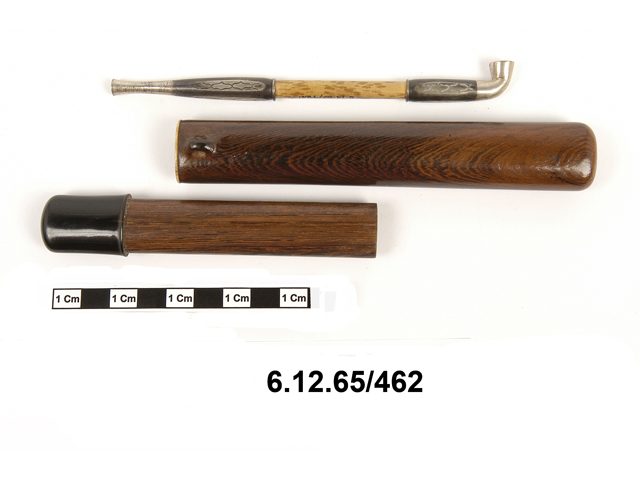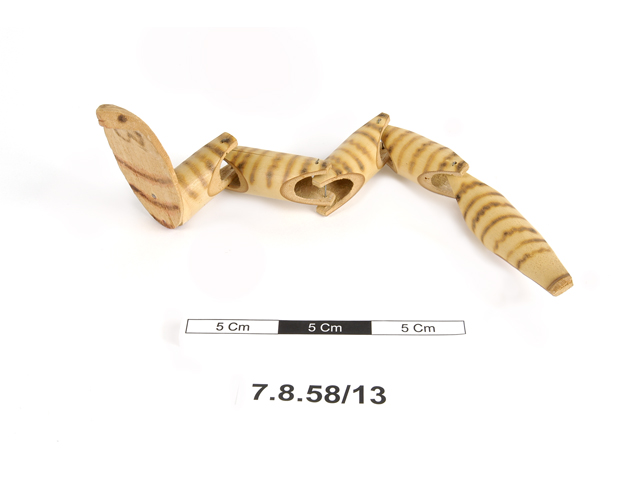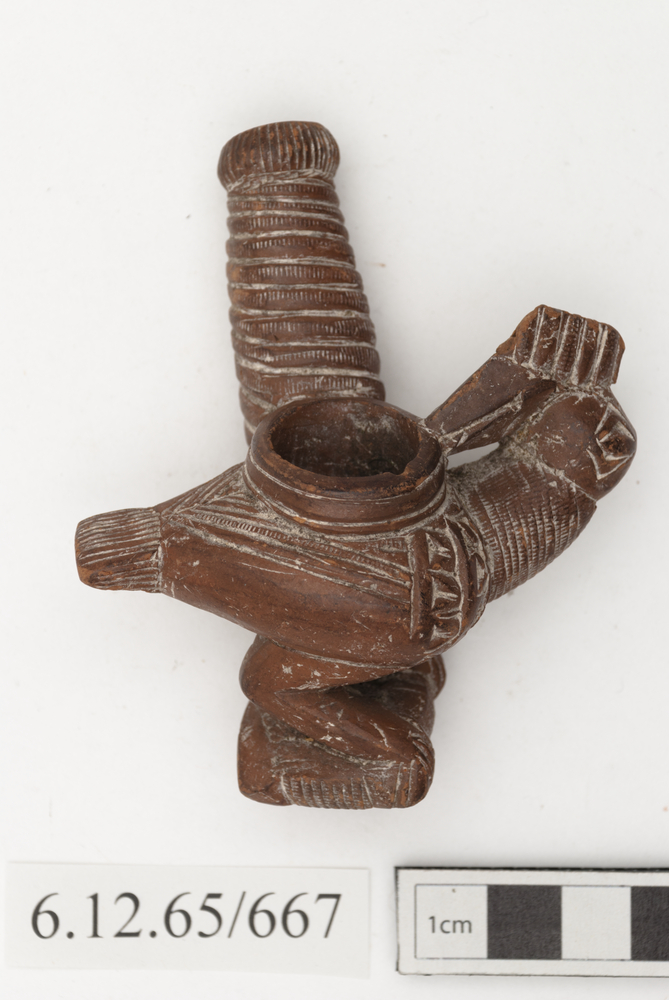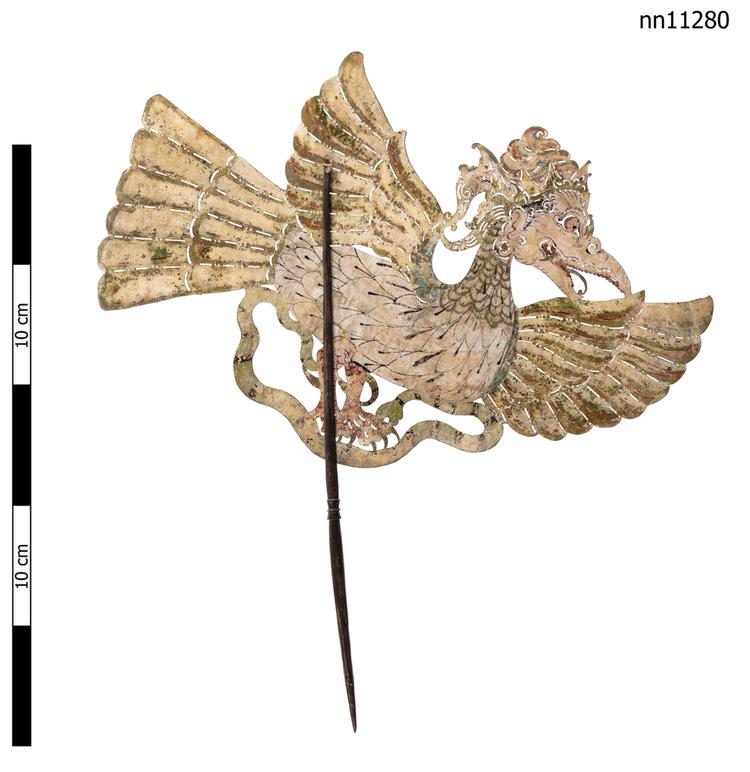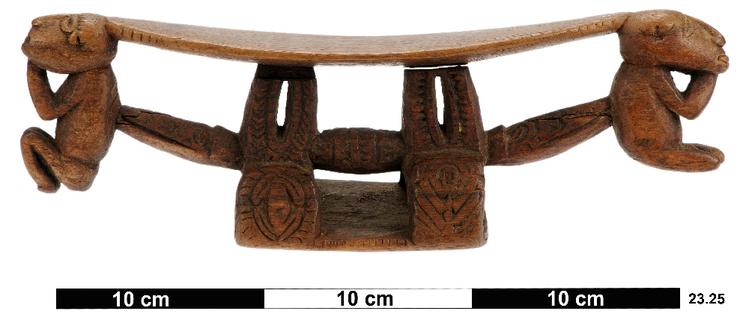
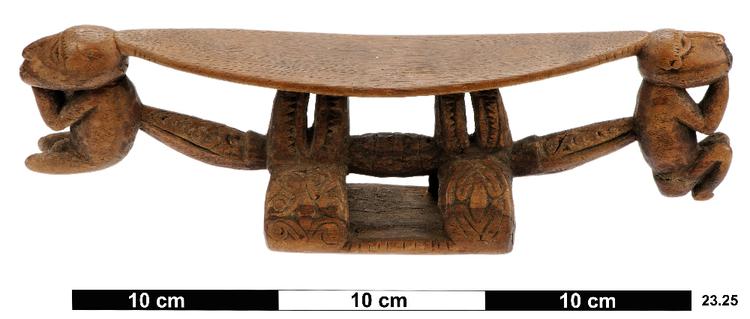
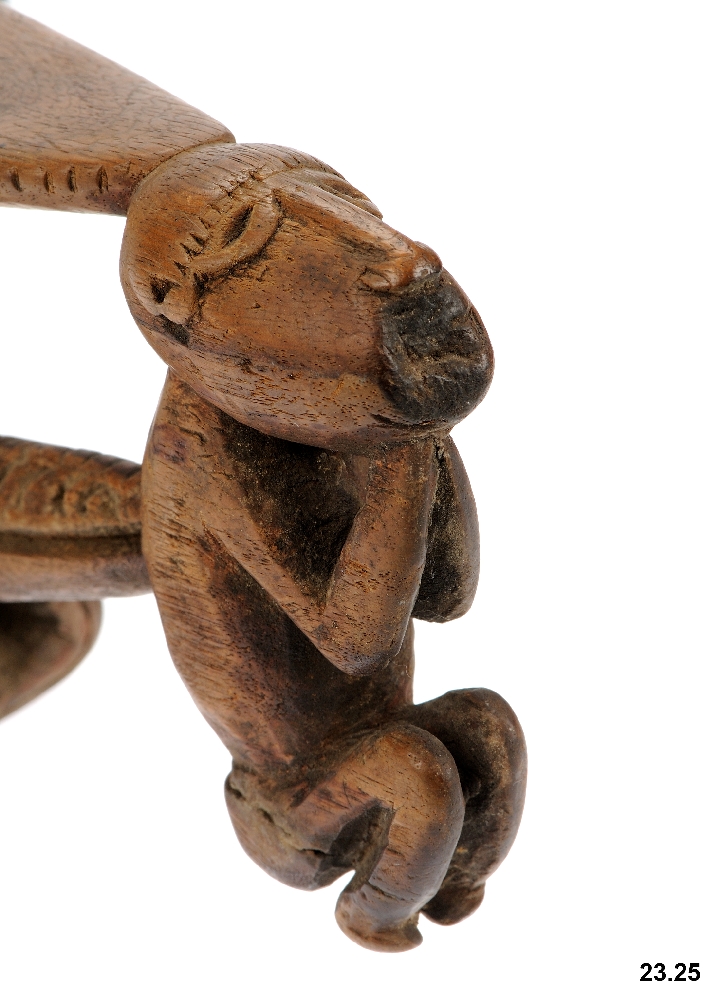
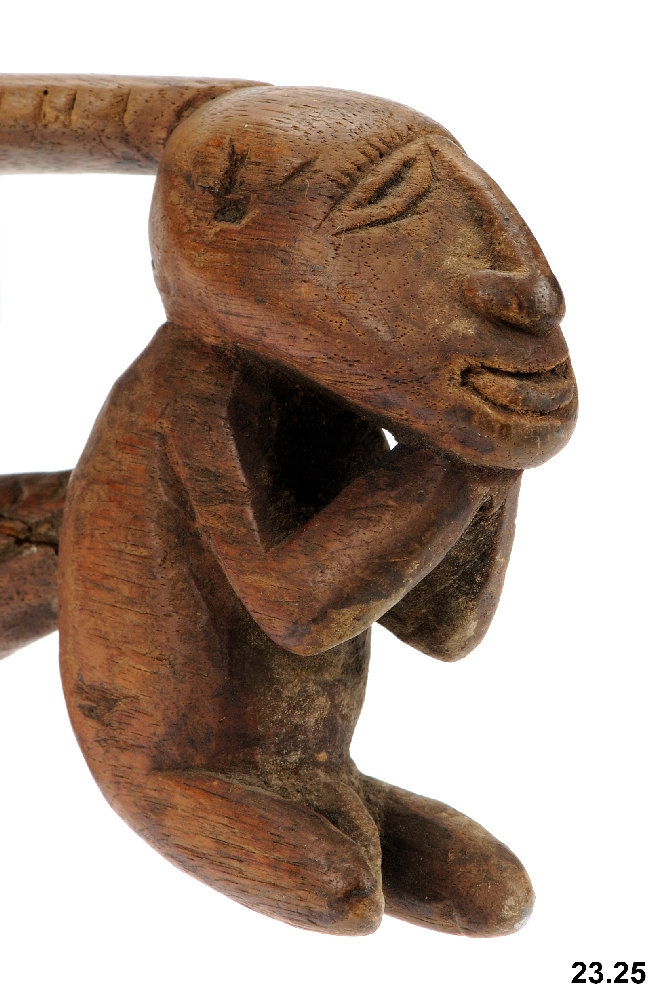
Headrest carved from a single piece of wood, with two opposed human figures suspended at the two ends of a highly abstracted crocodile form.
Headrest, Rai Coast, Madang Province, Papua New Guinea. Once named Astrolabe Bay, the woodcarvings produced by men of the northern Rai Coast of Papua are widely respected for their sophisticated composition and skilled realisation. Usually, we come across the large ancestor figures or ceremonial masks of this region published in books about the great works of Pacific art, but headrests such as this are quite rare. The Rai Coast carvers were active exporters of their works along the northern coast of the island, and their carvings have been found as far east as the island of New Britain, several hundred miles away. Here, the artist has created a practical piece of furniture – a headrest – which is both comfortable to the accustomed user and beautifully composed. The form has two vertical lines of symmetry in its design, and the two endearing little figures recline in a position that suggests we use the headrest to do the same. Westerners are often surprised to learn that wooden forms like this have been used in the place of pillows in many parts of the world, but these pieces of furniture were something to which people became accustomed from childhood. Wood. Late 19th Century. Formerly in the private collection of Mr Frank Hanlin.



